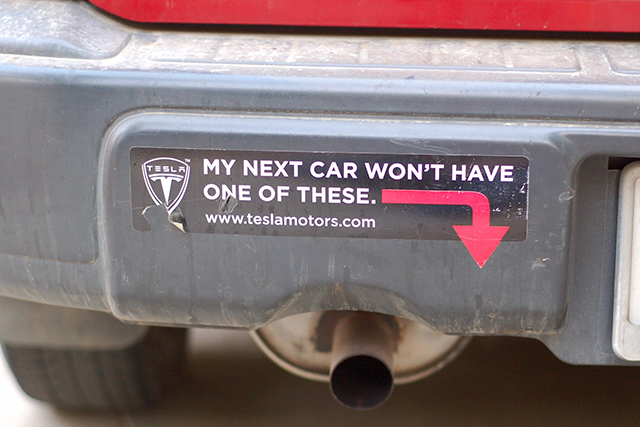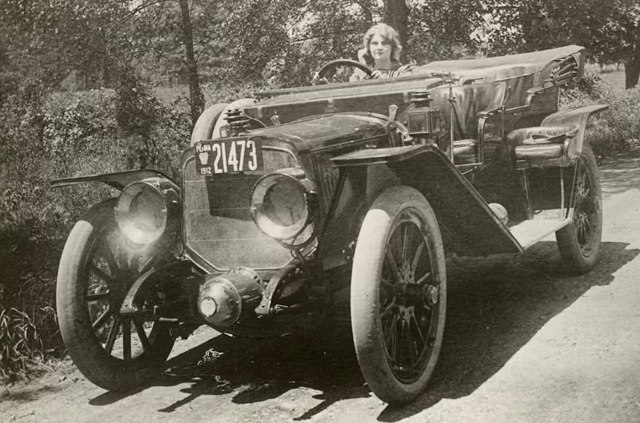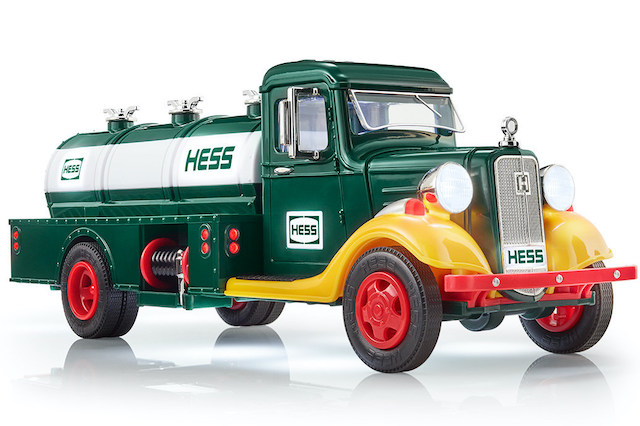Bumper stickers. Some people love them, some people loathe them. But nobody can argue that they’re everywhere.
So how did these ubiquitous pieces of advertising come about? And how have they managed to last the test of time? Let’s take a look.
The Bumper
The idea of using a vehicle for advertisement was around before the automobile was even invented. In the horse-and-buggy days, it was common for people to adorn horsefly nets with advertising slogans.
The trend continued when automobiles came around. But almost all early cars lacked bumpers. The safety feature wasn’t widely adopted until 1927, when Ford released the Model A. Drivers decorated their bumpers with homemade signs. But these were usually made of cardboard or metal and attached using wire. Needless to say, they didn’t last very long.
The Sticker
The bumper sticker as we know it today can be traced back to a screen printer in Kansas City, Mo. named Forrest P. Gill. In the 1940s, Gill found himself with a surplus of two wartime technologies: adhesive-backed paper and fluorescent paint. He combined the two and the bumper sticker was born. His new creation was a significant improvement over handmade signs that fell off cars or easily wore down.
The first early adopters of bumper stickers were tourist sites. Instead of having a single sign on the side of the road, destinations now had countless ads traveling across the country. Gill’s first large volume request was 25,000 bumper stickers for Marine Gardens in Clearwater, Fl. (The company Gill founded is still around today and still selling bumper stickers.)
The popularity of bumper stickers took a major step forward during the 1952 presidential election between Dwight Eisenhower and Adlai Stevenson. It was the first election to include the use of bumper stickers as advertising materials. They have since been used in every U.S. presidential election. To this day, political advertising remains a mainstay use of bumper stickers.
Bumper Stickers Today
Bumper stickers have evolved over the years to include decals and placards. The most famous of the latter is the “Baby on Board” sign. Interestingly enough, the ubiquitous sign was developed and sold by a man without children.
In 1984, Massachusetts businessman Michael Lerner was asked by a friend for advice on how to market the signs. Lerner wasn’t a father but he had recently endured a harrowing experience driving his young nephew. “People were tailgating me and cutting me off,” he told the Wall Street Journal. “For the first time, I felt like a parent feels when they have a kid in the car.”
Lerner tweaked the design, creating the now-famous black-and-yellow diamond sign. “Baby on Board” was an immediate hit. Less than a year after hitting the market, Lerner had sold 3 million signs.
“Baby on Board” isn’t the only popular sign or sticker to last the test of time. Others are religious (the ichthys, “Coexist”), familial (“My Child is an Honor Student,” the stick figure family), and safety related (“Slow Down, Move Over,” “School’s Open – Drive Carefully”).

No Laughing Matter
As innocent as bumper stickers can be, they have not been without their fair share of controversy. In fact, in 1991, they were the topic of a legal case that reached the Georgia Supreme Court.
In Cunningham v. the State, a Georgia resident had been caught having a bumper sticker on his car that contained an expletive. He was charged with violating a state law that prohibited car owners from attaching “any sticker, decal, emblem, or other device containing profane or lewd words.” The owner argued this law was unconstitutional. The court agreed, stating that the law violated the 1st and 14th Amendments. Thus, the humble bumper sticker became protected by freedom of speech.
A 2008 study by Colorado State University found that car owners with bumper stickers or window decals tend to be more aggressive drivers. Researchers also discovered the message of the sticker was irrelevant. A driver with a “Peace and Love” sticker was as likely to be an aggressive driver than one with a more hostile sticker.
Which bumper stickers do you see most often? Which ones do you like and which are you tired of? Let us know in the comments below!
82 Thoughts on “The Unique History of Bumper Stickers”
Leave A Comment
Comments are subject to moderation and may or may not be published at the editor’s discretion. Only comments that are relevant to the article and add value to the Your AAA community will be considered. Comments may be edited for clarity and length.


















I’ve got one that says “DON’T STEAL THE GOVERNMENT HATES COMPETITION!” I won’t dare put it on my car, for fear someone will steal it! I put it in my window when I drive to city hall to pay my property taxes though!
“Don’t always believe what you think”
I don’t put them on my own car but I do enjoy reading them.
One I saw recently; “I have no idea where I’m going”. Another good one; “Life is a bitch and so am I”.
Thank you. I appreciated the entire article and replies. I just screamed and I am 77 years old.
Bumpah stickah in Boston: “Drive like crazy and you’ll get there”
“So many pedestrians, so little time” 🙂